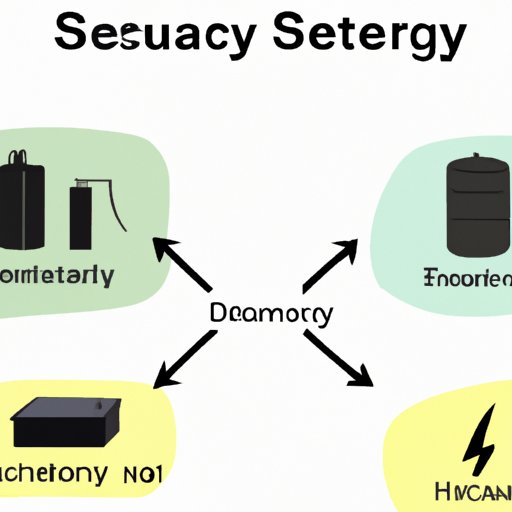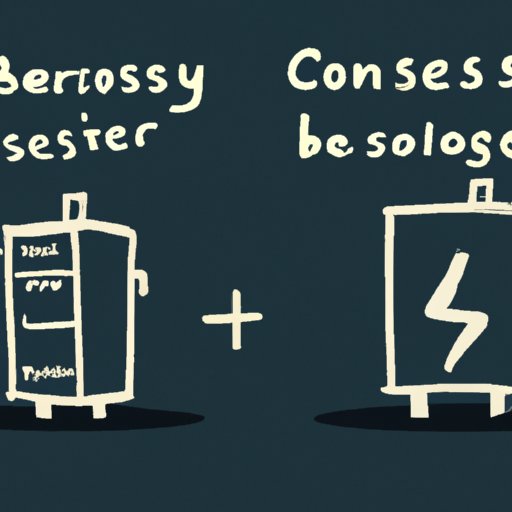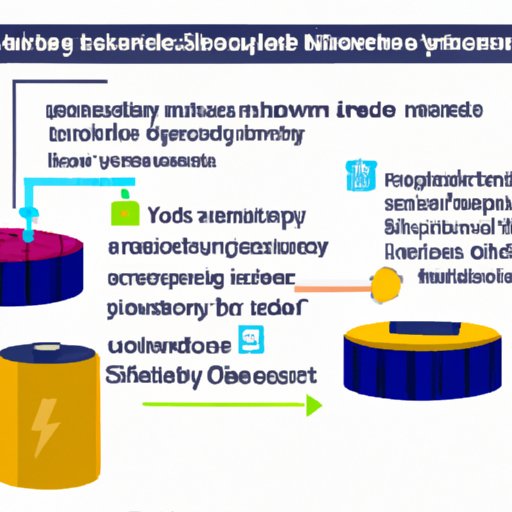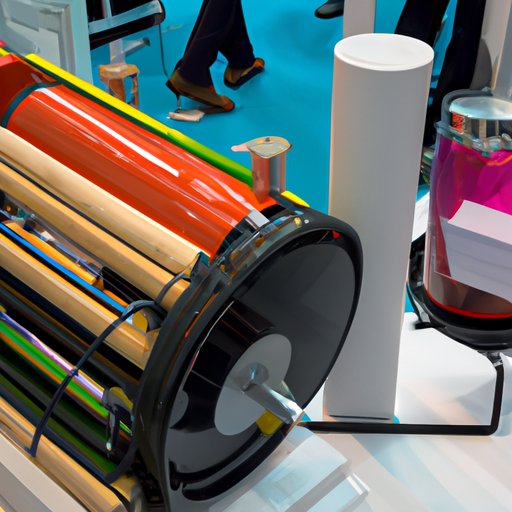Introduction
Energy storage is a critical component of our modern electricity systems. As demand for renewable energy increases, so does the need for efficient and reliable ways to store it. In this article, we will explore the different types of energy storage technologies, their benefits and drawbacks, and which ones are best suited for various applications.

Types of Energy Storage Technologies
There are several different types of energy storage technologies available today. These include lithium-ion batteries, flywheels and compressed air energy storage, thermal energy storage, and hydrogen fuel cells. Each has its own advantages and disadvantages, as well as different applications that they are best suited for.
Lithium-ion Batteries
Lithium-ion batteries are one of the most popular forms of energy storage. They are used in many consumer electronics and electric vehicles. They are relatively lightweight, have a long lifespan, and can store large amounts of energy. However, they are expensive and require regular maintenance.
Flywheels and Compressed Air Energy Storage
Flywheels and compressed air energy storage (CAES) are two other forms of energy storage. Flywheels are large rotating devices that store energy in the form of kinetic energy. CAES uses pressurized air to store energy in underground caverns. Both of these technologies have relatively low costs, but they are not as efficient as lithium-ion batteries.
Thermal Energy Storage
Thermal energy storage involves storing energy in the form of heat or cold. This can be done by using materials such as rocks, concrete, water, or ice. Thermal energy storage is relatively inexpensive and can provide consistent energy over a long period of time. However, it is not as efficient as some of the other energy storage technologies.
Hydrogen Fuel Cells
Hydrogen fuel cells are a relatively new technology that uses hydrogen and oxygen to produce electricity. They are relatively efficient and have a long lifespan. However, they are still quite expensive and require specialized infrastructure for storage and transportation.
Case Studies of Best Energy Storage Technologies in Use Today
To get a better understanding of the different energy storage technologies, let’s look at some case studies of the best energy storage technologies in use today.
Example 1: Lithium-ion Batteries
Lithium-ion batteries are used extensively in electric vehicles and consumer electronics. Tesla’s Powerwall is an example of how lithium-ion batteries can be used to store energy for residential homes. The Powerwall stores solar energy during the day and then provides power to the home when needed.
Example 2: Flywheels and Compressed Air Energy Storage
Flywheels and compressed air energy storage are used in a variety of applications, from grid storage to industrial processes. An example of a successful project is the Flywheel Energy Storage System in California, which is used to store energy from wind and solar sources. The system is able to store enough energy to power 25,000 homes for up to four hours.
Example 3: Thermal Energy Storage
Thermal energy storage is used in many applications, such as cooling systems and district heating. One example is the SolarReserve Concentrated Solar Power plant in Nevada, which uses molten salt to store energy. The plant is able to store enough energy to power 75,000 homes for up to eight hours.
Example 4: Hydrogen Fuel Cells
Hydrogen fuel cells are being used in a variety of applications, including transportation and industry. One example is the Ballard Power Systems fuel cell in British Columbia, which is used to power a fleet of buses. The fuel cell is able to store enough energy to power the buses for up to 400 kilometers.

Pros and Cons of Different Energy Storage Solutions
Each type of energy storage technology has its own pros and cons. Let’s take a look at some of the key advantages and disadvantages of each.
Lithium-ion Batteries
The main advantage of lithium-ion batteries is their high energy density, which makes them ideal for applications such as electric vehicles. They also have a long lifespan and require minimal maintenance. However, they are expensive and require specialized infrastructure for storage and transportation.
Flywheels and Compressed Air Energy Storage
Flywheels and CAES have relatively low costs compared to other energy storage technologies. They also require minimal maintenance and have a long lifespan. However, they are not as efficient as lithium-ion batteries and require specialized infrastructure for storage and transportation.
Thermal Energy Storage
Thermal energy storage is relatively inexpensive and can provide consistent energy over a long period of time. However, it is not as efficient as some of the other energy storage technologies and requires specialized infrastructure for storage and transportation.
Hydrogen Fuel Cells
Hydrogen fuel cells are relatively efficient and have a long lifespan. However, they are still quite expensive and require specialized infrastructure for storage and transportation.
Cost-Benefit Analysis of Different Energy Storage Options
When choosing an energy storage solution, it is important to consider both the initial and long-term costs of the technology. Initial costs include the purchase and installation of the equipment, while long-term costs include maintenance, repairs, and energy losses due to inefficiency. It is also important to assess the financial benefits of the various solutions, such as reduced energy bills and increased revenue from selling excess energy.

Exploring the Potential of Emerging Energy Storage Technologies
In addition to the traditional energy storage technologies, there are a number of emerging technologies that have the potential to revolutionize the way we store energy. Two of the most promising technologies are supercapacitors and vanadium redox flow batteries.
Supercapacitors
Supercapacitors are a type of energy storage device that can store large amounts of energy in a small space. They are able to charge and discharge quickly, making them ideal for applications such as electric vehicles and grid storage. They are also relatively inexpensive compared to other energy storage technologies.
Vanadium Redox Flow Batteries
Vanadium redox flow batteries are a type of rechargeable battery that uses vanadium ions as the electrolyte. They are able to store large amounts of energy and have a long lifespan. They are also relatively inexpensive compared to other energy storage technologies.
Assessing the Environmental Impact of Different Energy Storage Solutions
When assessing the environmental impact of different energy storage solutions, it is important to consider factors such as carbon emissions and waste disposal. For example, lithium-ion batteries produce more carbon emissions than other types of energy storage technologies, while hydrogen fuel cells produce no carbon emissions. Additionally, waste disposal should be taken into consideration, as some energy storage technologies require special disposal methods.
Conclusion
Energy storage is a critical component of our modern electricity systems. There are several different types of energy storage technologies available today, each with their own advantages and disadvantages. When choosing an energy storage solution, it is important to consider factors such as initial and long-term costs, financial benefits, environmental impact, and potential for emerging technologies. By taking all of these factors into account, it is possible to find the best energy storage technology for any given application.
(Note: Is this article not meeting your expectations? Do you have knowledge or insights to share? Unlock new opportunities and expand your reach by joining our authors team. Click Registration to join us and share your expertise with our readers.)
